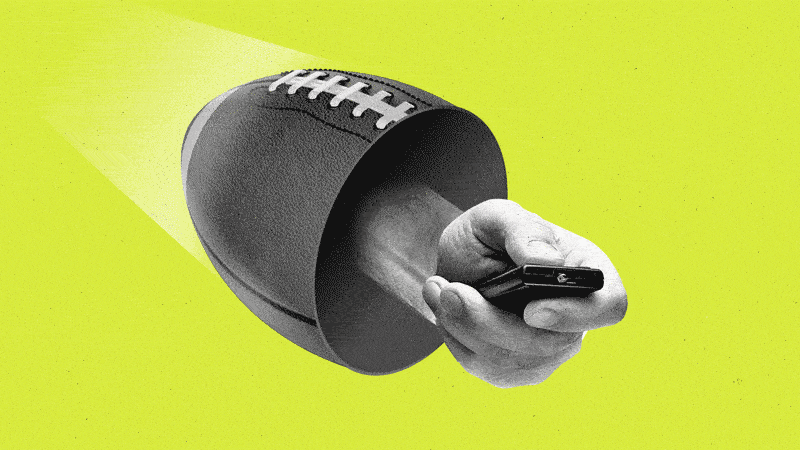How the NFL is charting its future in the digital age

The NFL’s direct-to-consumer service, NFL+, has some notable additions this year. In a sign of the times, the streaming service now includes the NFL’s cable networks, NFL RedZone and NFL Network.
The NFL is one of the major leagues at the forefront of sports’ shift from linear TV to streaming (other examples include MLB and MLS streaming on Apple TV+). Along with NFL+ and its cable inclusions, the NFL has also struck deals with tech giants like Amazon and Google that shift numerous games to the internet. “Thursday Night Football” games stream on Amazon Prime Video, and Google’s YouTube secured the rights to NFL Sunday Ticket, a package of out-of-market games. NBCUniversal’s streaming service, Peacock, is also set to exclusively stream two games this season, including one regular-season game and one playoff game.
“The NFL has recognized the shift in streaming and the growing trend of cord cutting and have adapted very quickly and smartly to the change,” says Mike Seiman, CEO and founder of Digital Remedy, a performance marketing company. “Other major pro sports leagues are not far behind though, with MLB, NBA, and NHL games also being broadcast on streaming services. But the NFL is certainly paving the way.”
That’s not to say that NFL games aren’t popular on traditional TV networks; they’re still among the most watched broadcasts of any given year, and the league will have a foot in that door as long as the audience is there. For instance, CBS announced that its recent broadcast of the game between the New York Jets and Dallas Cowboys was watched by 25 million viewers. But to sustain its fan base in the future, it might need to follow football enthusiasts to new places. After all, NFL Commissioner Roger Goodell has said that the league launched NFL+ to “grow our direct relationship with millions of fans.”
Connecting with fans isn’t necessarily only about where games are broadcast. John Cassillo, sports analyst at the media firm TVRev, says the NFL “has not been afraid to embrace emerging digital platforms,” and that extends to social media platforms as well.
“Most teams are very active [on TikTok] — not just during the season but even in the offseason — to get digitally minded fans involved,” Cassillo says.
In other words, the NFL is cognizant of where young consumers are spending a lot of their time, and it aims to catch their attention while maintaining its older, more established fans who are locked in on more traditional channels. In recent years, the league has even ramped up partnerships with digital content creators, and has job openings for influencer and talent marketing roles.
Alan Wolk, lead analyst and co-founder of TVRev, says the league is “splitting the difference.”
The NFL’s strategy maybe about not only following the fans, but also the larger media industry. Linear TV ad revenue has declined, and some experts project advertising dollars will continue to grow in the streaming space in the years to come. Insider Intelligence projects that CTV ad spend will grow from $25 billion this year to over $40 billion in 2027. Some legacy media companies are increasingly eyeing sports streaming amid linear TV’s woes and competition from tech companies.
NBCUniversal boasted that it saw its largest two-game audience for an NFL kickoff since 2015, with 25 million viewers across the NBC network and its streaming counterpart, Peacock. And Disney CEO Bob Iger has been open about wanting to make the ESPN cable network a streaming-only product.
So what does it all mean for brands and advertisers? Last year, the NFL generated a record $4 billion in ad revenue. Cassillo sees the league’s embrace of streaming as a potential point of urgency for advertisers.
“Advertisers need a push to really invest in connected TV solutions,” he says. “As a consumer, you can see how that approach changes. Some advertisers have completely different creative [from broadcasting]. It can even feel native to the programming.”
He adds, “It does hasten the ad industry to invest in CTV and up its game. It can’t just be something as simple as plugging in what they’re already doing.”
Digital Remedy’s Seiman says the NFL’s streaming gains are “a huge opportunity [for advertisers] to reach sports-loving audiences in a much more targeted way that can be much more closely tied to outcomes.”
“Essentially, it’s the power of premium live linear experiences now combined with the attribution, measurement, and optimization capabilities of digital,” he says.
Subscribe to The Current
Subscribe to The Current newsletter